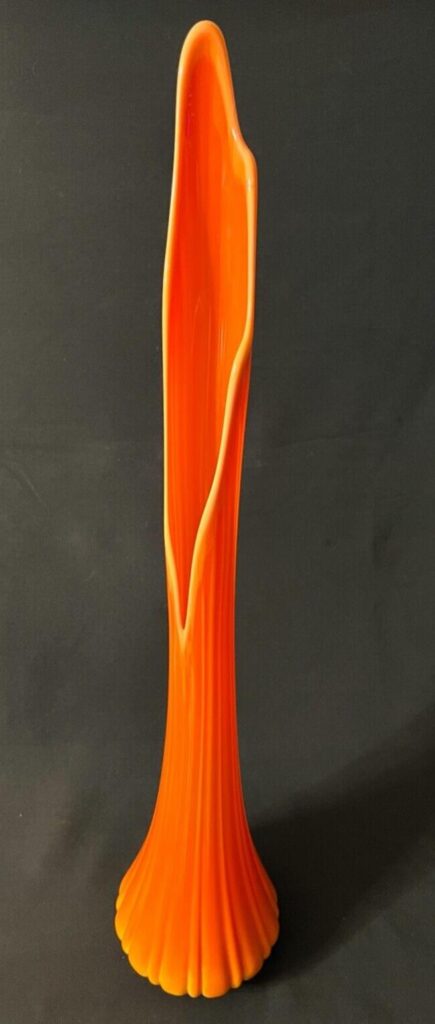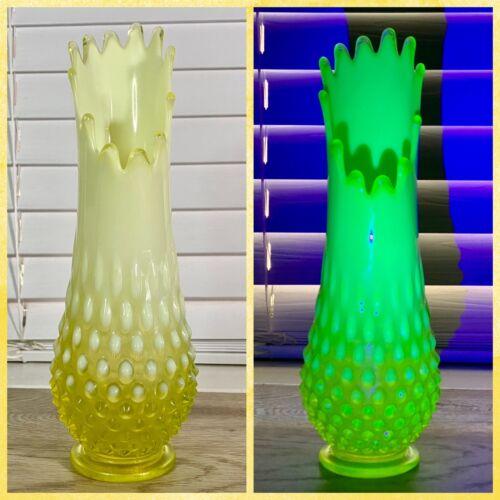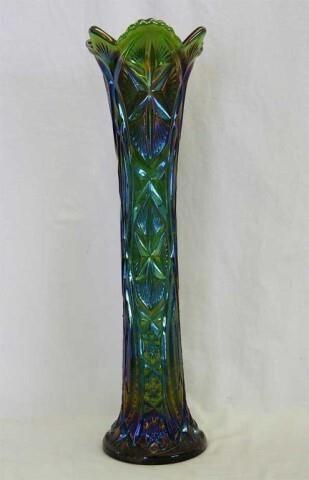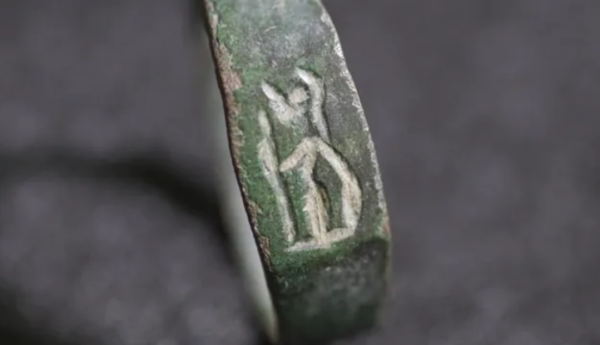#Swung #Vases #Swinging #60s #Icons #Style #WorthPoint

Talented glass artists thinking outside the mold created one of the most iconic decorative objects of the 20th century: swung vases.
With their free-flowing forms and rich jewel-like colors, these elongated vases were an instant hit with those who admired unconventional designs, and they became ubiquitous home accessories in the 1960s, remaining popular through the 1980s.
Over the past few years, swung vases have become hot collectibles again, being chased down in thrift stores, getting enthusiastic reactions on social media, and inspiring Facebook groups devoted to them. Some have also been playfully transformed into the Yip Yip Martians from Sesame Street.
Because of their unique design process, no two swung vases are alike, making them even more valued treasures for collectors who will pay top dollar for the most desirable examples.
A SWINGING ’60s AESTHETIC
As their name implies, swung vases were created by glassblowers swinging a piece of glass. During this distinctive process, pieces were extracted individually from their molds, clamped on the bottom with a specialized snap case tool, reheated, and swung in a circle or pendulum motion.
By swinging vases upside down while the glass was molten, glassmakers could form graceful pieces with slender necks and organically and dramatically shaped rims. Vases were also made in varying lengths, ranging from seven-inch bud vases to “architectural” floor versions that could sometimes be over forty inches tall. The elasticity and temperature of the glass and the swinging technique determined the size of the vase.
IDENTIFYING VINTAGE SWUNG VASES
Each company that made swung vases used its own methods, but each vase has two main characteristics.
The seam along its body is the biggest clue to identifying a swung vase. Authentic examples have a seam that is generally more prominent near the base and becomes fainter as it goes toward the neck.
Swung vases also have distinctive and irregularly shaped openings, which are their most striking feature. The mouth can be bent, crimped, dipped, flared, folded, jagged, or pinched in funky ways.

NOTABLE MAKERS OF SWUNG VASES
The precursor to the modern iconic swung vase popularized in the 1960s was produced in 1889 by the Bryce Higbee Glass Company, which made a tall and slender vase known as Ethol or Cut Log. Each was hand-finished, and, given their elongated and fragile nature, many of these vases have surprisingly survived for over one hundred years.
Many companies made swung vases during their heyday, including the Italian glass company Murano. However, American companies were the most prolific makers of swung vases, renowned for their high-quality glassware. Some of the more notable American manufacturers were Blenko Glass and Fenton Glass, which produced carnival glass swung vases, as did others like the Imperial and Northwood companies and L.E. Smith. The asymmetrical openings of Viking Glass are also highly sought after.
With swung vases created by so many companies, it can be challenging to identify specific makers, especially since most vases don’t have manufacturers’ marks or names engraved on them and are identified primarily by their color, name, or style. For instance, if you come across a swung vase in a Hobnail pattern, it was likely made by Fenton; swung vases in the Bittersweet color were only produced by L.E. Smith, and Viking made the extremely popular Epic Six Petal line, introduced in 1962, that is distinguished by its six “petals” or sides on the base of each piece.
These three companies also added foil and paper labels on their swung vases. L.E. Smith and Viking’s vases had metallic-looking stickers, while Fenton added paper tags on theirs. Unfortunately, many of these labels have fallen off or were removed over the years, but many vases still bear them.

THE MOST VALUABLE VINTAGE SWUNG VASES
Creative glassmakers left behind a diverse legacy of swung vases in various styles, from short and squat to tall and thin, and in a rainbow of colors for collectors to acquire today. Some models, most often made by L.E. Smith and Viking, also have pedestal bases that add an elegant touch.
Collectors have also created different classifications for the vases, including diamond butts, with diamond patterns on the bases; opalescents, which have a milky, iridescent appearance; and smoothies, which are the most common type of swung vase and have smooth surfaces and no patterns.
Except for the massive floor models, these vases were produced in large quantities and are still easy to find at affordable prices. Prices can range from under $50 to several thousand dollars, depending on the color, maker, and size—values can jump considerably for examples that are twenty-four inches and taller.
According to the WorthPoint Price Guide, Fenton, L.E. Smith, and Viking swung vases are the most valuable today.
Fenton’s swung vases have a big following and can be found in various colors and other styles aside from carnival glass, though the classic tapered ribbed vase with asymmetrical ridged edges is a favorite. One of these, a larger size in the desirable amethyst color, was sold in 2023 for over $1,000.
Also coveted by collectors are L.E. Smith’s Bittersweet swung vases, many of which have been selling in the past two years between $400 for smaller vases and more than $1,500 for larger ones. Many of the company’s other swung vases have been swinging between $500 and $2,700.
Among Viking’s swung vases that collectors prize are its Epic Six Petal examples in any color, many of which have been selling between $100 and over $900; its striking Epic Three Foil vases that have been ranging between $50 to $950 in the past couple of years; and Bluenique pieces, which are a vibrant blue and range between $50 to $400.
Part of a unique chapter in the history of American glass artistry, swung vases make a bold and beautiful statement in any interior and are a classic addition to any vintage glass collection.
Adina K. Francis has been a writer and editor in the antiques and collectibles field for more than 20 years. She has a bit of an obsession with the Victorians and thinks that dogs are one of life’s greatest gifts.
WorthPoint—Discover. Value. Preserve.



